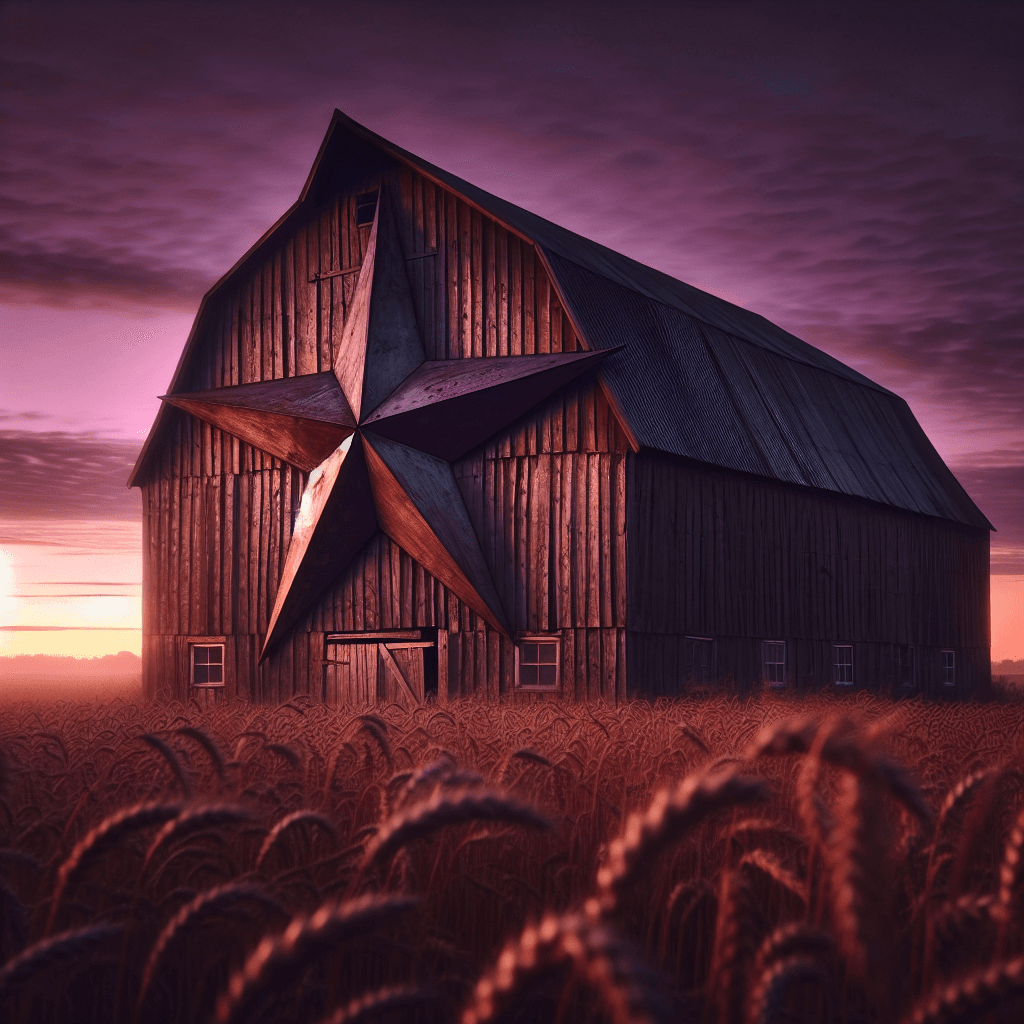Why are so many old barns decorated with giant metal stars
You might think they're just for decoration, but the true story behind these iconic barn stars is a fascinating tale of good luck, folklore, and early American superstition.


Too Long; Didn't Read
TLDR: The giant metal stars on old barns are purely decorative, not structural. They originated as a folk art trend from German-American farmers, similar to hex signs for good luck, and have since become a popular symbol of rustic farmhouse style or patriotism.
Shining a Light on Tradition: Why Are So Many Old Barns Decorated with Giant Metal Stars?
Have you ever been driving down a country road, admiring the rolling fields and historic farmhouses, and noticed a giant metal star mounted on the side of a barn? These iconic decorations are a quintessential part of the American rural landscape, but they are much more than just rustic ornaments. While they are popular decorative items today, their history is rooted in specific cultural traditions and symbolism that stretch back centuries. This post will delve into the history and meaning behind these iconic barn stars, separating fact from folklore and explaining their journey from a symbol of good fortune to a staple of modern farmhouse decor.
The Roots of the Barn Star: Pennsylvania Dutch Tradition
The practice of placing stars on barns is most often traced back to German-American farmers in Pennsylvania, commonly known as the Pennsylvania Dutch, during the 18th and 19th centuries. Originally, these stars served a purpose beyond simple decoration. Some historians believe they started as the identifying mark of a specific barn builder, a kind of structural signature left on the finished project.
Over time, however, these marks evolved into a form of folk art imbued with meaning. For these communities, the star became a symbol of good luck and good fortune, similar to a horseshoe hung above a door. It was thought to bring prosperity to the farm, protect the livestock, and ensure a good harvest. Placing a star on the most important building on the farm—the barn—was a way of bestowing a blessing upon the entire homestead.
Decoding the Colors: A Spectrum of Symbolism
While any star was considered a positive omen, the color of the barn star often carried a specific, intended meaning. While interpretations can vary slightly by region and family tradition, the most commonly accepted symbolism is as follows:
- Black: Represents protection and is used to ward off negative energy or evil.
- Blue: Symbolizes peace, protection, and tranquility.
- Red: Stands for passion, emotion, and creativity.
- Green: Represents fertility, growth, and abundance, both for crops and family.
- White: Symbolizes purity, innocence, and the power of the moon.
- Brown: Represents the earth, friendship, and strength.
- Yellow: Symbolizes light, love, and connection to the divine.
Farmers would choose a color based on the specific blessing or protection they wished to bring to their farm and family.
Barn Stars vs. Hex Signs: Clearing Up a Common Confusion
It's important to distinguish barn stars from another piece of Pennsylvania Dutch folk art: hex signs. The two are often confused, but they are distinct.
- Barn Stars: Are three-dimensional, made of metal, and are almost always a simple five-pointed star. Their meaning is generally positive, associated with luck and the builder's mark.
- Hex Signs: Are typically painted on circular wooden discs and feature intricate geometric patterns, which can include stars, rosettes, birds, and tulips. Their name comes from the German word "sechs" (six), referring to the common six-pointed star designs, though their purpose was often believed to be for warding off "hexes" or evil spirits.
While both traditions originate from the same cultural group, the simple metal barn star has a different lineage and meaning than the more complex painted hex sign.
The Modern Revival: From Farm to Farmhouse Chic
In recent decades, the barn star has experienced a massive surge in popularity, moving beyond the fields of Pennsylvania to homes across the country. Fueled by the rise of "modern farmhouse" and "rustic chic" design trends, the barn star has been embraced as a symbol of Americana, heritage, and a connection to a simpler, rural past. Today, people hang them on barns, houses, fences, and even inside their homes as wall art. While for many they are now purely decorative, their presence still evokes a sense of tradition, luck, and the enduring spirit of American agriculture.
Conclusion
So, the giant metal star on an old barn is more than just a piece of metal. It's a cultural artifact with a rich history, representing a blend of a builder’s pride, a farmer’s hope, and a community's traditions. What began as a folk practice among German immigrants has evolved into a beloved national symbol of rustic charm and good fortune. The next time you spot one of these shining stars on your travels, you’ll know you’re not just looking at a decoration, but at a small piece of American history that continues to wish well upon all who pass by.


